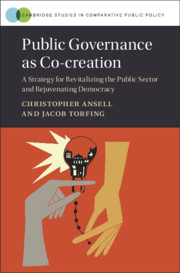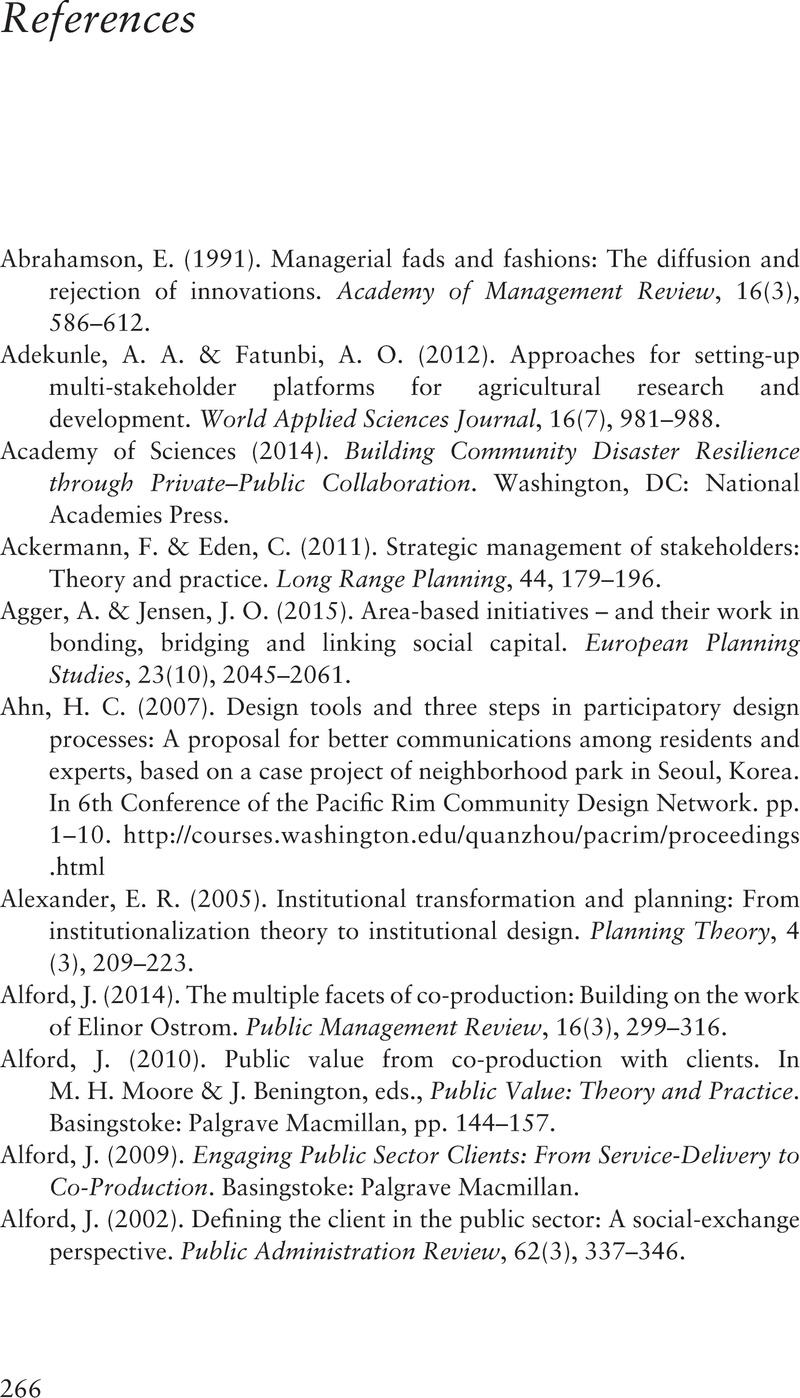 Public Governance as Co-creation
Public Governance as Co-creation Book contents
- Public Governance as Co-creation
- Cambridge Studies in Comparative Public Policy
- Public Governance as Co-creation
- Copyright page
- Dedication
- Contents
- Figures
- Tables
- Acknowledgments
- Abbreviations
- 1 A New Public Governance Based on Co-creation
- 2 The Concept of Co-creation
- 3 Co-creation Is Everywhere and Nowhere
- 4 Co-creation as Generative Governance
- 5 The Complex and Dynamic Process of Co-creating Public Value
- 6 Pathways to Co-created Public Value Outcomes
- 7 Co-creation as the Reinvention of Democracy
- 8 Mainstreaming and Scaling Co-creation
- 9 Handling Dilemmas, Avoiding the Dark Side, and Tackling Democratic Problems
- 10 Where Are We Today, and Where to Go from Here?
- References
- Index
- References
References
Published online by Cambridge University Press: 21 May 2021
- Public Governance as Co-creation
- Cambridge Studies in Comparative Public Policy
- Public Governance as Co-creation
- Copyright page
- Dedication
- Contents
- Figures
- Tables
- Acknowledgments
- Abbreviations
- 1 A New Public Governance Based on Co-creation
- 2 The Concept of Co-creation
- 3 Co-creation Is Everywhere and Nowhere
- 4 Co-creation as Generative Governance
- 5 The Complex and Dynamic Process of Co-creating Public Value
- 6 Pathways to Co-created Public Value Outcomes
- 7 Co-creation as the Reinvention of Democracy
- 8 Mainstreaming and Scaling Co-creation
- 9 Handling Dilemmas, Avoiding the Dark Side, and Tackling Democratic Problems
- 10 Where Are We Today, and Where to Go from Here?
- References
- Index
- References
Summary

- Type
- Chapter
- Information
- Public Governance as Co-creationA Strategy for Revitalizing the Public Sector and Rejuvenating Democracy, pp. 266 - 311Publisher: Cambridge University PressPrint publication year: 2021


